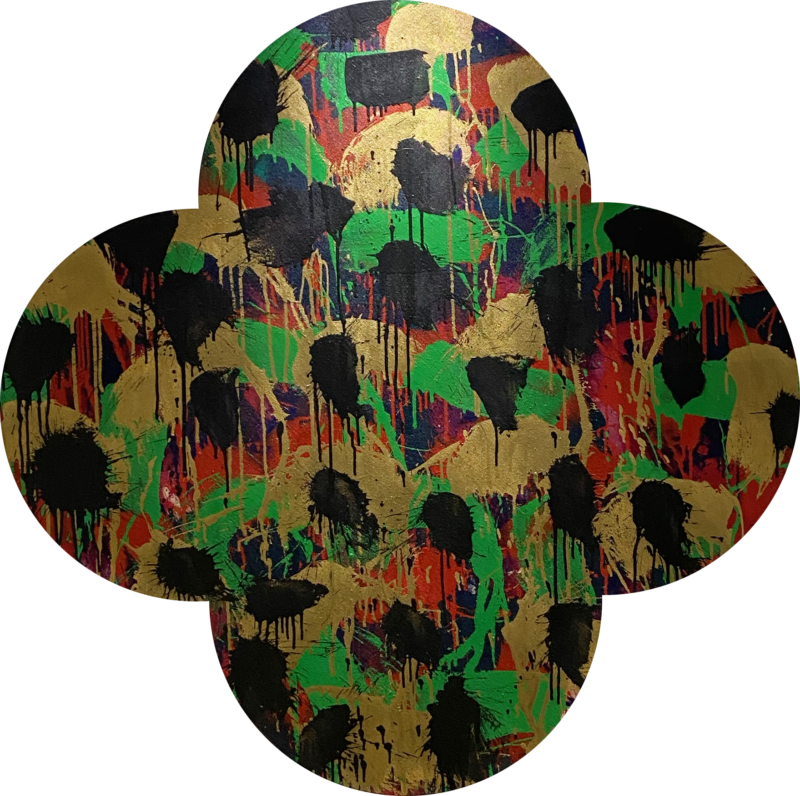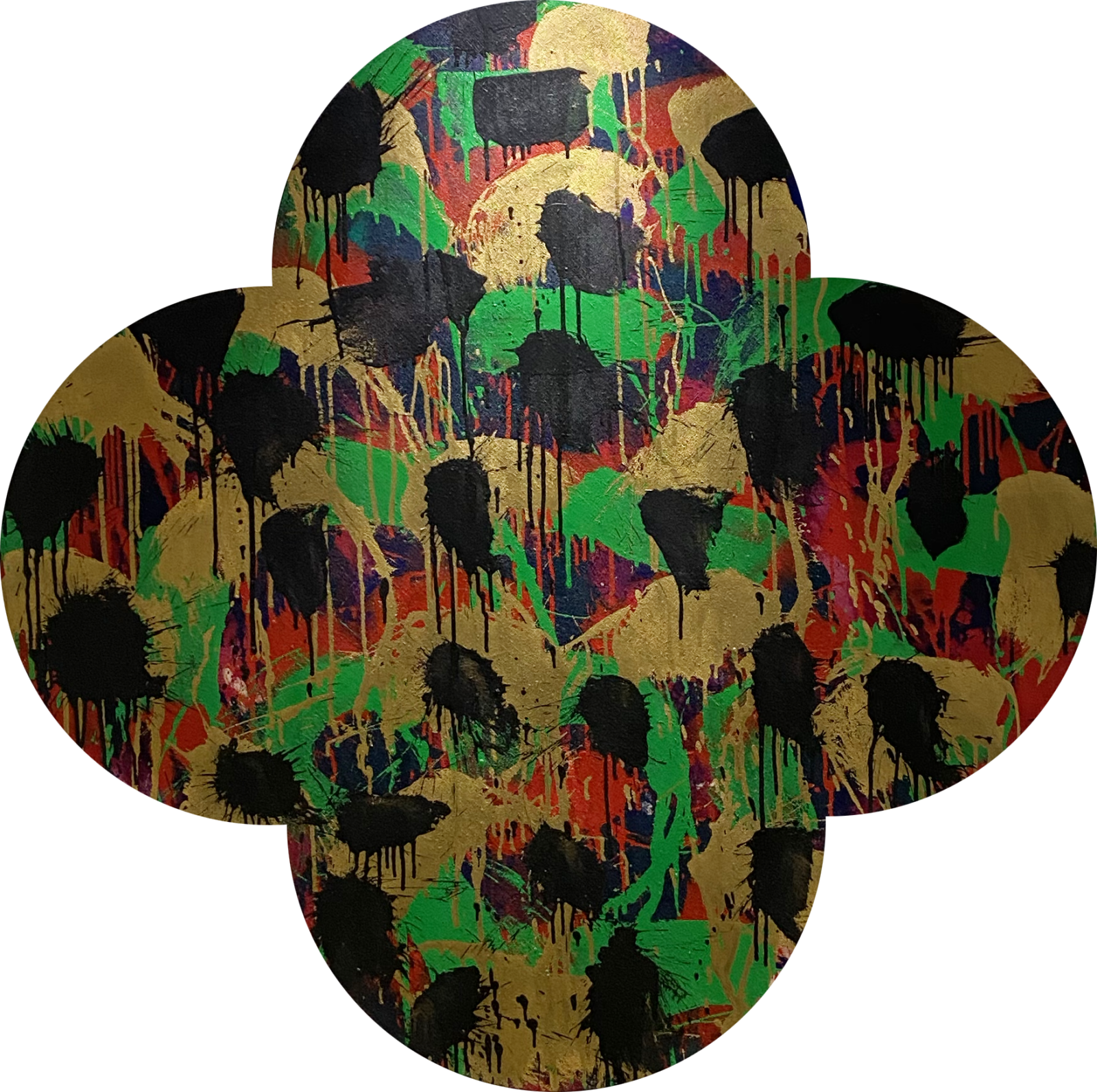GIMBLETT, Max;
Kabuto
1987
Acrylic and metallic pigments on canvas
1525 x 1525mm

In the mid-1980s, Max Gimblett’s art changed direction. Instead of continuing to explore colour via minimalist abstraction, he began to imbue previously emptied forms with symbolic meanings drawn from different sign, language, and belief systems. These included biblical, classical, and Celtic myths, Chinese and Islamic calligraphy, Jungian psychology, Tantra, and Zen Buddhism.
Gimblett began to make use of the quatrefoil, the form or motif for which is know best known. It has many meanings. Found in both Western and Eastern artmaking traditions, it symbolises such objects as a rose, a lotus, and a cross. The bold gestural marks that cover Kabuto are also a hallmark of Gimblett’s work. They connect strongly with Japanese ceramics and Zen Buddhist painting practice.
References
Wystan Curnow and John Yau, Max Gimblett (Tāmaki Makaurau: Craig Potton Publishing and Gow Langsford Gallery, 2002), 24.
Provenance
1996–
Fletcher Trust Collection, purchased September 1996
–1996
Unknown

